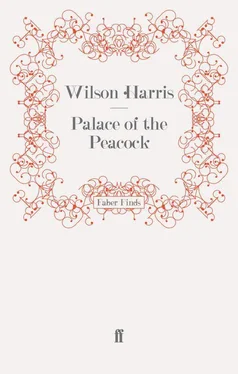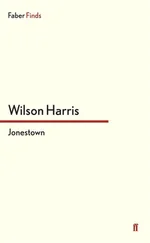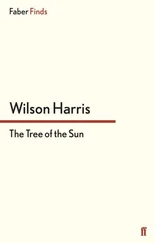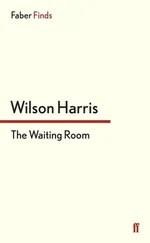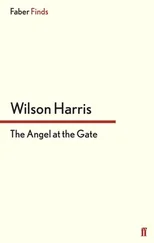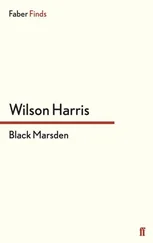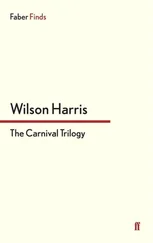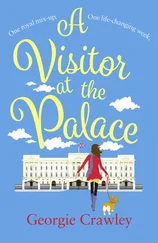Wilson Harris - Palace of the Peacock
Здесь есть возможность читать онлайн «Wilson Harris - Palace of the Peacock» весь текст электронной книги совершенно бесплатно (целиком полную версию без сокращений). В некоторых случаях можно слушать аудио, скачать через торрент в формате fb2 и присутствует краткое содержание. Год выпуска: 2013, Издательство: Faber Finds, Жанр: Современная проза, на английском языке. Описание произведения, (предисловие) а так же отзывы посетителей доступны на портале библиотеки ЛибКат.
- Название:Palace of the Peacock
- Автор:
- Издательство:Faber Finds
- Жанр:
- Год:2013
- ISBN:нет данных
- Рейтинг книги:5 / 5. Голосов: 1
-
Избранное:Добавить в избранное
- Отзывы:
-
Ваша оценка:
- 100
- 1
- 2
- 3
- 4
- 5
Palace of the Peacock: краткое содержание, описание и аннотация
Предлагаем к чтению аннотацию, описание, краткое содержание или предисловие (зависит от того, что написал сам автор книги «Palace of the Peacock»). Если вы не нашли необходимую информацию о книге — напишите в комментариях, мы постараемся отыскать её.
Palace of the Peacock — читать онлайн бесплатно полную книгу (весь текст) целиком
Ниже представлен текст книги, разбитый по страницам. Система сохранения места последней прочитанной страницы, позволяет с удобством читать онлайн бесплатно книгу «Palace of the Peacock», без необходимости каждый раз заново искать на чём Вы остановились. Поставьте закладку, и сможете в любой момент перейти на страницу, на которой закончили чтение.
Интервал:
Закладка:
It can come as no surprise that Harris is using the ghost of the first-person narrating convention rather than the convention itself. The self-sufficient character may break down in a Harris novel but no amount of I-narration can put him together again. The I-narrator of Palace disappears from time to time, and instead we have the native point of view of the Amerindian Vigilance, or the authoritarian and cracking voice of Donne, or an authorial voice which is unable to contain itself and has to enter into the I-narrator: “‘Yes, fear I tell you, the fear that breeds bitterness in our mouth, the haunting sense of fear that poisons us and hangs us and murders us. And somebody,’ I declared, ‘must demonstrate the unity of being and show …’ I had grown violent and emphatic … ‘that fear is nothing but a dream and an appearance … even death …’ I stopped abruptly.”
By the time we come to Harris’s most recent novel, Jonestown (1996), there is fulfilment of what is implicit in the way Palace is told. Jonestown carries to the furthest extreme a standard authorial device in the later works of pretending to be editing somebody else’s manuscript. This is a formal registering of the author’s discovered sense that he is putting together, sometimes intuitively, fragments and relics coming unpredictably from he knows not where. Francisco Bone, a survivor of the Jonestown killings, sends his fiction manuscript to WH; and to compound the fiction, Bone makes WH a character in his book, referring to him and discussing his outlook at several points in the text.
For the record then, the I-narrator of Palace goes, and so do the increasingly ineffective attempts to maintain the difference between the author and the fictional character that we see in the first five novels. Gone too are the use of diary and diarist as in The Eye of the Scarecrow (1965), and the use of journal and remembering character as in the novels from Scarecrow to Ascent to Omai (1970).
In the later novels it is impossible to miss the foregrounding of three features: an interest in and interrogation of the author’s presence or participation in a fiction; a conviction of the overlapping ground between fiction and “reality” in a text; and musings on how texts and authors come into being at all. These features existed in Palace long before anyone was theorising about them, and they allow us to make of Harris a major theorist of fiction. But to read his works as they unfold is to understand that for Harris these “meta” questions are not empty play or modern theory.
The imagery and symbolism in the opening paragraphs of Palace call for a responsiveness that may seem to bear a resemblance to ingenuity. A good illustration is the noose. The arresting shot pulls the narrator up like a hangman’s rope or cowboy’s lasso. As Harris himself has pointed out, the noose turns up again on p. 21, twice on p. 49, and crucially on p. 101, when Donne dangles from the cliff-face. In the narrating character’s own words, the shot or noose stifles his own heart in heaven. The noose we find is being elaborated and re-elaborated in the book to serve as a binding image relating to a key concept — death and rebirth.
For implied in this second paragraph is the not unfamiliar paradox that you have to be blind or dead to the things of this world if you are to experience the reality or behold the power and the glory. This comes out in the description of the narrator’s approach to the dead man. The dead man’s eyes are open. They are staring boldly up at the sun. The living man is blinded by the sun, while the dead man looks the sun boldly and unflinchingly in the eye. “The sun blinded and ruled my living sight but the dead man’s eye remained open and obstinate and clear.” You can’t go far in a Harris novel without meeting up with ambivalent symbol and spiritual paradox, the bitter knowledge of death in life, and the liberating sense of life in death and life after death.
But for the moment the reader is concerned about how the I-narrator is tied up with the shocking event and the star-crossed persons. How come the blind man sees and the living man doesn’t? We have questions about the murdered horseman and about the person who was laying wait to “blow him away”.
*
Without belabouring the point we can notice that in both theme and style much of what happens later in the Harris oeuvre is present in Palace, but there are significant differences as the unfolding proceeds. The first five or Guyana novels manage to convey a solid sense of history and place, of social classes and individual types, even while attempting to free us from the tyrannies and complacencies of believing in these as absolutes. We recognise social and political issues even while we notice that the effect of the works is to add other levels of reading to them. From the point of view of language we can observe that the use of dialect in the episode leading to the stabbing of one of the daSilva twins (pp. 86–91) in Palace of the Peacock gives off a sense of familiar reality while a strange and difficult experience is being described.
The part played by such localisation in giving the reader a “necessary stone and footing” in the early novels has not perhaps been sufficiently noticed, and critical discussion has not been clear enough about what might have taken its place in the later works. Jonestown does not try to convey the particular geographical and historical sense of Guyana. Nor does it dwell, like Shiva Naipaul’s Journey to Nowhere (1981), on the mass suicide in 1978 of over 900 followers of the messianic cult leader Jim Jones. The novel does not reflect directly on the dependent condition of countries like Guyana, or question how Jim Jones was allowed to establish a base in Burnham’s Guyana.
In many of the later novels, the immediate social and political themes merely float. The landscape is much more interiorised, and much more diffused than it used to be. This may be a loss to the reader but there is an explanation. Francisco Bone has heard of WH’s “sympathies for voyagers of the imagination”. In his letter he explains to WH that his manuscript is an attempt to explore not just this place now but “overlapping layers and environments and theatres of legend and history that one may associate with Jonestown”.
Harris’s novel wants, systematically, to make imaginative or poetic links between different times and places; the drastic fate of invisible Mayan cities, the unsolved disappearance of Caribs in British Guiana, and the crumbling walls and roads of coastal villages and townships of New Amsterdam that are silent witness and memorial to Spanish, French, Dutch and British colonisation over the centuries. In the twentieth century there are the mass migrations out of Guyana and the Jonestown catastrophe. Since, for Harris, history is a series of parallel texts, one might even call these links intertextual links.
The clash of communities and the breakdown of community are central to Palace of the Peacock. But by the time Harris comes to write Jonestown the breakdown of particular communities and the fundamentalist conflicts between communities in the world loom for him as signs and symptoms of a world-wide phenomenon: the fall from a universal and pre-historic or “original” sense of community and place. So Francisco Bone laments that “the fabric of the modern world has worsened”, that billionaire death has multiplied his purse strings, and that “the torments of materialism have increased”.
In Jonestown, Harris’s concern about the worsening of the modern world leads him to project what happened in Guyana as an instance of “the erosion of community and place which haunts the Central and South Americas”. And so the book turns out to be less about the particular Guyanese catastrophe of 1978 than about the need to create an in-pulling “memory theatre” or an “imagination theatre”. To change the terms, the interest is in “a mathematics of chaos” which might allow one to figure out or act out in the imagination the hidden meanings of all such episodes in pre-and post-Columban times.
Читать дальшеИнтервал:
Закладка:
Похожие книги на «Palace of the Peacock»
Представляем Вашему вниманию похожие книги на «Palace of the Peacock» списком для выбора. Мы отобрали схожую по названию и смыслу литературу в надежде предоставить читателям больше вариантов отыскать новые, интересные, ещё непрочитанные произведения.
Обсуждение, отзывы о книге «Palace of the Peacock» и просто собственные мнения читателей. Оставьте ваши комментарии, напишите, что Вы думаете о произведении, его смысле или главных героях. Укажите что конкретно понравилось, а что нет, и почему Вы так считаете.
